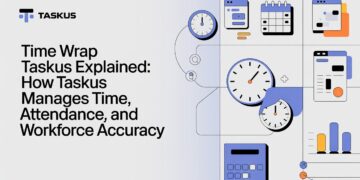Stock trading has always been popular among traders, and more experienced traders have been turning to stock CFDs as an alternative to investing in individual shares due to the advantages that CFDs present. However, CFD trading is more complex than traditional stock investing, and there are some pitfalls that can cause traders to suffer losses, such as not knowing how the contracts work, not doing sufficient research on the stock market, and using leverage with careless abandon.
In this article, we aim to provide some tips on how traders can better manage their risk when trading stock CFDs and make more informed decisions when buying and selling these contracts.
What are stock CFDs?
Stock CFDs (Contracts for Differences) are financial instruments that allow traders to speculate on price movements of stocks without actually owning the underlying shares. When a trader purchases a stock CFD, they enter a contract with a broker to exchange the price difference of an individual stock between the time they open and close the trade.
Risks that come with trading stock CFDs
Before we look at risk management techniques for trading stock CFDs, it is essential that traders understand what the risks are in the first place. CFDs are unique instruments with their own risks with the use of leverage and the relative complexity in trading mechanism.
Market volatility
The first thing that traders are faced with when trading any instrument is market volatility. This is uncertainty in the market – the possibility that prices of the instrument may fluctuate rapidly in response to supply and demand dynamics caused by political tension, economic downturn, and other factors. This volatility can impact a trader’s investment portfolio negatively substantially.
Counterparty risk
Trading CFDs requires entering into a contract with a broker or another dealer. There is a chance that this counterparty – the person who is selling the contract you are buying, or buying the contract you are selling – may default on the exchange. This can lead to a loss of capital.
Use of leverage
Stock CFD traders can use leverage when trading, and they can control a larger position with a relatively small amount of capital at the outset. While this can be a good way to maximise potential returns when market conditions are favourable, it can also lead to amplified losses when traders face adverse market movements.
Lack of information
Finally, a risk that comes with trading stock CFDs is that there may be a lack of information on market price movements that are about to happen. When investing in the stock market, company insiders or other institutional investors may have more information than retail traders do, creating an imbalance of information and a disadvantage for the average market participant. This can lead to traders making uninformed or ill-informed decisions, which can lead to losses.
Risk management techniques for trading stock CFDs
Understand your trading goals and risk appetite
The first thing you should do when you are setting risk management strategies for yourself is to understand your own trading needs, objectives, and style. You should know how much risk you are willing to take when trading, including how much money you can afford to lose. This can help you determine the kind of trades you make and the stocks you trade. If you are someone who enjoys high-risk trading, you may want to go for more volatile stocks. If you are a more conservative trader, you may choose to invest in dependable and established companies and hold your shares over the long term to ride out any short-term volatilities.
You should also understand why you are trading. All traders have the goal of receiving financial returns, so that is not a specific objective. You should think about how much money you want to make, how long are you planning on trading, and whether you want to hone your skills and learn about different ways of trading or simply use the same strategy each time.
Diversify your portfolio
Once you have understood what your investment objectives are, you should aim to diversify your portfolio to reduce the overall risk of your trades. This can mean investing in other asset classes such as forex, commodities, and bonds. If you are only interested in investing in stocks, you can also learn how to trade equities in the form of individual stocks, ETFs, and other stock derivatives such as stock options. If you cannot do that, then you should diversify the type of stocks you invest in, based on their sector, geography, and company size.
For example, a good way to diversify your portfolio with just stock CFDs is to buy CFDs on companies across unrelated or little-related sectors. If you buy a stock CFD on a technology corporation, you may choose to invest in other types of companies, such as manufacturers, finance, or agriculture. Typically, the less correlated to each other your investments are, the lower your overall risk of trading.
Use leverage with caution
A risk management technique that every trader must know is to use leverage with caution. While leverage can amplify potential returns, it can also amplify potential losses. Traders should be sure of market predictions before they use leverage, and they should have a strong understanding of market mechanics and factors that drive the price of the stock they want to buy a CFD on. If they are unsure of how the market may go, they should choose not to use leverage or to use low leverage. This way, they can minimise the risk they take on when trading.
Have an exit strategy before entering the market
Another important thing you should do before entering the market is to have an exit strategy. Many people believe that you should have an exit strategy while you are participating in the market. But the truth is, it is far more valuable to have one before you even enter the market.
You should know what you will do in the event of your stocks depreciating or performing in an unprecedented manner. You should also know how to hedge against existing positions, which instruments you will use as a hedge, and how you will execute the trade.
Stay informed of stock market movements
Staying informed on market movements and how the stock market is doing in general will give you a better handle on your managing your portfolio. Knowing about investor sentiment on the stock you are trading and learning about the company’s financial performance can help you find patterns and trends, which can guide you to make more informed decisions when managing your portfolio.
Bottom line
Stock CFD trading is a high-risk activity, so you should not only be aware of the risks, but also be prepared to mitigate them. When investing in this product, you should ensure that you understand not only how CFD trading works but also how the stock market works, particularly for the stock you want to invest in. You should also work with a regulated broker to minimise the possibility of legal issues. Remember that there is no such thing as a guarantee of profits when trading, and so as a rule of thumb, you should never trade more than you can afford to lose.
Also Read Interesting Articles At: Tech New Master.

















